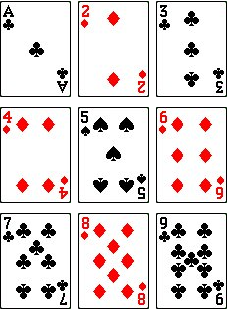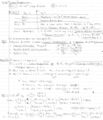12-240/Classnotes for Thursday October 18
| |||||||||||||||||||||||||||||||||||||||||||||||||||||||||
Riddle Along
The game of 15 is played as follows. Two players alternate choosing cards numbered between 1 and 9, with repetitions forbidden, so that the game ends at most after 9 moves (or four and a half rounds). The first player to have within her/his cards a set of precisely 3 cards that add up to 15 wins.
Does this game have a winning strategy? What is it? Who wins, the first to move or the second? Why am I asking this question at this particular time?
See also a video and the transcript of that video.
| Dror's notes above / Students' notes below |
Linear transformation
Definition:
A function L: V-> W is called a linear transformation if it preserve following structures:
1) L(x + y)= L(x) + L(y)
2) L(cx)= c.L(x)
3) L(0 of V) = 0 of W
Proposition:
1) property 2 => property 3
2) L: V -> W is a linear transformation iff c F, x, y V: L(cx + y)= cL(x) + L(y)
Proof:
1) take c= 0 in F and x=0 in V. Then L(cx)=cL(x) -> L(0 of F * 0 of V)=(0 of F)*L(0 of V)=0 of W
2)(=>)Assume L is linear transformation
L(cx + y)= L(cx) + L(y)= c*L(x) + L(y)
(<=) 1. Follows from L(c*x+y) = c*L(x)+L(y) by taking c=1
2. Follows by taking y=0
Examples
1. L: R^2 -> R^2 by
2. P,Q: P(F)








